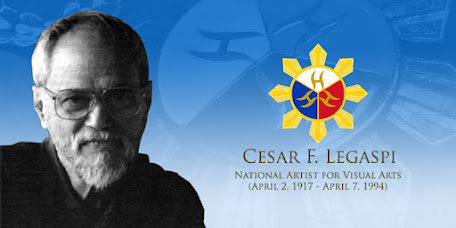Cesar Torrente Legaspi
CESAR LEGASPI
National Artist for Visual Arts (1990)
(April 2, 1917 – April 7, 1994)
Background
As a pioneer of the country's "neo-realists", Cesar Legaspi is known for his unique achievements in refining cubism in the context of the Philippines. Legaspi belonged to the so-called "Thirteen Moderns" and later to the "Neorealists". His unique style and bold theme contributed to the emergence and final acceptance of contemporary art in the Philippines. Legaspi uses geometric fragmentation techniques, interweaving social comments, overlapping and interacting with myths and modern times, juxtaposed with disturbing power and strength.
Major Works
Among his works are Gadgets I, Gadgets II, Diggers, Idols of the Third Eye, Facade, Ovary, Flora and Fauna, Triptych, Flight, Bayanihan, Struggle, Avenging Figure, Turning Point, Peace, The Survivor, The Ritual.
Choose 1 major work (maybe the best one on your own)
- Man and Woman (alternatively known as Beggars) 1945
Example of an artwork or major work (picture or any). Describe it.
Man and Woman (alternatively known as Beggars) 1945
His early (the 1940s-1960s) works are described as depictions of anguish and dehumanization of beggars and laborers in the city. These include Man and Woman (alternatively known as Beggars) and Gadgets'.
Why did you choose this specific major work & how will you relate this to your chosen strand/track which will lead you to your future field of specialization.
Legazpi's paintings are ultimately a visual narrative that celebrates human relationships.
Like the self-proclaimed characters in, his work can transform the ordinary into the
extraordinary. A fluent artist, Legazpi serves as a social commentator seeking to inspire
conversations between artists and society at large.




Comments
Post a Comment